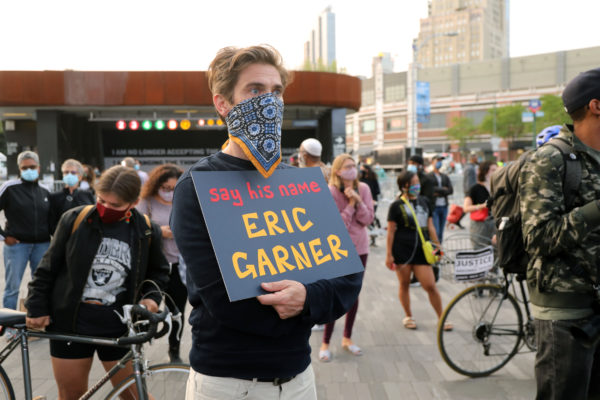Changes regarding law enforcement’s use of chokeholds and no-knock warrants now will be in place following a new policy announced by the U.S. Department of Justice.
On Tuesday, Sept. 14, the Department of Justice announced that under the new policy, the department’s law enforcement components, including the FBI, the Drug Enforcement Administration and the U.S. Marshals Service are “prohibited from using ‘chokeholds’ and ‘carotid restraints’ unless deadly force is authorized.”
The press release clarified, “that is when the officer has a reasonable belief that the subject of such force poses an imminent danger of death or serious physical injury to the officer or to another person.” Both techniques were at the center of many high-profile deaths that called for its removal, including Eric Garner.

On July 17, 2014, Garner, an unarmed Black man, was accused of selling single cigarettes outside a store on Staten Island when several New York Police officers, including former officer Daniel Pantaleo, approached him.
Pantaleo, who is white, placed him in a chokehold, that had been barred by the department, and helped compress his chest against the ground while trying to arrest him. With the assistance of other law enforcement, Pantaleo was able to bring him down.
Garner yelled out 11 times, “I can’t breathe,” until his body went limp. The 43-year-old was later pronounced dead at the hospital. The incident was captured on video footage, sparking outrage and protests. Furthermore, none of the officers involved was indicted. It would take five years before Pantaleo was fired in 2019 by then New York Police commissioner James O’Neill.
Though victims like Garner were not mentioned in the release, the department said “the use of certain physical restraint techniques — namely chokeholds and carotid restraints — by some law enforcement agencies to incapacitate a resisting suspect has too often led to tragedy.”
Still, the release only stated that this new policy applies to law enforcement mentioned above others under the department umbrella. However, the policy does not apply to other organizations such as immigration enforcement agencies, which are overseen by the Department of Homeland Security. It doesn’t apply to state or local law enforcement either.
In the case of ‘no-knock,’ the DOJ is “limiting the use of higher-risk ‘no knock’ entries to only those instances where physical safety is at stake. If an agent suspects a threat to physical safety and seeks a no-knock warrant, the agent must first get supervisory approval from both a federal prosecutor as well as the agent’s law enforcement component.
Deputy Attorney General Monaco said in a statement that, “As members of federal law enforcement, we have a shared obligation to lead by example in a way that engenders the trust and confidence of the communities we serve.”
He added, “It is essential that law enforcement across the Department of Justice adhere to a single set of standards when it comes to ‘chokeholds,’ ‘carotid restraints,’ and ‘no-knock’ entries. This new policy does just that and limits the circumstances in which these techniques can be used.”


